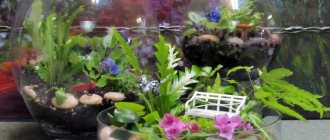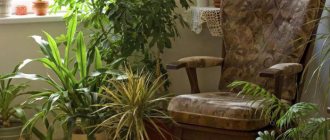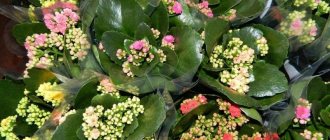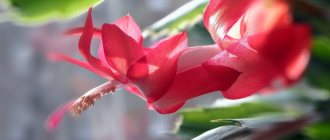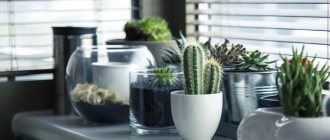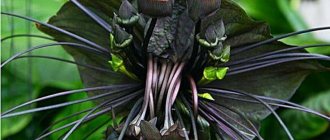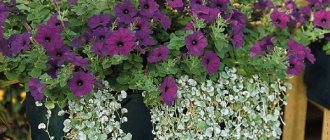If you're the type of person who follows fashion trends, this habit can continue in a variety of areas: from the choice of clothing and the latest technology you use to the choice of indoor plants. Some types of plants have gained great popularity recently, and we will tell you about them. As the new year approaches, the popularity of plants may change, but we have tried to collect the latest and most up-to-date information.
So, what are the trendiest indoor plants in 2020? The most trending indoor plants for 2022 are as follows:
- Money Tree
- Zamioculcas
- snake plant
- Philodendron white knight
- Peperomia Ginny
- Hoya majestic (imperialis)
- Philodendron with carved leaves
- Ceropegia Sanderson
- Tradescantia zebrina
- Alocasia Pink Dragon
- Neon Arrowroot
- Livistona Chinese
- cacti
- Spurge
- Stefania Pierrei
- Monstera deliciosa
While some of the plant types above may seem a little familiar to you, most of the options we're going to discuss in this article will make you look at the well-known houseplant in a whole new way. If you're ready to add some exciting new plants to your home garden, then keep reading.
Money Tree
This first fashionable recommendation for choosing indoor plants comes from popular glossy magazines, which named the money tree or Pachira aquatica the most popular indoor plant of the year. This wetland tree from the malvaceae family has also been declared the "easiest house tree" that doesn't require anything special to care for. The money tree received this status back in 2011, which proves that the popularity of the money tree has lasted quite a long time and is not losing ground.
In addition to being easy to care for, the money tree's stem is an excellent weaver, and its simple, bright green leaves can brighten up any room. If you are a fan of Feng Shui, it is believed that indoor plants such as the money tree can bring good luck and positive energy into your life. And who doesn't want to bring more positivity into their lives in 2022 or any other year?
Zamioculcas
Zamioculcas is one of the well-known plants, but you are unlikely to find or have encountered a similar indoor plant before. Zamioculcas is also sometimes called the dollar tree. Already this year, the plant has attracted so much attention because of its signature dark color, which looks majestic and gothic. Whether Zamioculcas grows alone or is part of a larger home garden, this plant is definitely something to look out for. It's no surprise that WallyGro magazine named it first on its list of trendy plants for 2022.
If you're not so keen on dark color schemes, the variegated Zamioculcas plant is a beautiful mix of pale yellow and bright green. However, the black color of the plant looks much more impressive and unusual than other combinations. Before growing Zamioculcas at home, you should know that this houseplant grows very slowly. For this reason, it is more difficult to find in garden centers. But this gives it even more popularity, rarity and beauty - these are precise trendsetters.
snake plant
The snake plant is a good choice on the list of indoor plants for beginners. One of the amazing things about the snake plant is that it has absolutely no roots. The snake plant is also known for its well-defined, vertical leaves with sharp edges. The leaves can be the same color or a combination of several shades, and sometimes the leaves of the snake plant even come across stripes or other patterns.
In 2022, Pantone magazine's color of the year is classic blue. The magazine writes about this color: “Inspiring calm, confidence and connection, this lasting blue hue underscores our desire for a strong and stable foundation on which we will build as we cross the threshold of a new era.”
Any houseplant that pairs well with classic blue is a winner in 2022, and it just so happens that the snake plant fits the bill very well.
Philodendron white knight
You're probably very familiar with Philodendron, a member of the Araceae family, which has nearly 500 different species. One of them is the White Knight Philodendron. Although this species is a rarity, it has made it onto the list of 2022 fashion trends, adding different versions of everyone's favorite traditional houseplants.
Instead of bright green leaves, the White Knight variety has a darker shade of green. The leaves are mostly the same shape and size, but they have many white spots in a random pattern. These may be small spots on some leaves and large white areas on others. Don't forget the red stems either, as they add a pop of color to this popular houseplant.
Syngonium Pink Splash
Add a touch of pink to your home with one of the most unusual syngoniums. It's like a vine with beautiful pastel pink spots on the leaves. Syngonium prefers to let the soil dry completely before watering and likes to grow in bright, indirect light.
We prepare a delicious roll with cheese and ham from potatoes
We make a comfortable homemade hammock for the cat. It replaces a pet's bed
Not a warehouse, but a place to relax: how to decorate a balcony on a minimal budget
Peperomia Ginny
Even if you're not following the color trends in 2022, it's hard to ignore the fact that popular color influences play an important role in home garden design. Instead of indoor gardens with variations of green, try mixing others to add new colors created by Mother Nature herself. The next few houseplants I'll talk about will allow you to create a beautiful rainbow display, starting with Peperomia Ginny.
It is a colorful houseplant with green centers, yellow edges and bright red or pink edges. It's no surprise that this beautiful peperomia plant, a member of the Piperaceae family, goes by other names such as tricolor peperomia, red-edged peperomia, or rainbow peperomia.
To keep the color as vibrant as possible, provide your peperomia with moderate to bright light and remember to only water when the soil is very dry.
Although peperomias are not succulents, they will still store water in their stems and leaves, so they do not need to be watered very often.
Hedges made of plants in the interior
Composition in flowerpots
Indoor flowers are a new tool for zoning a room. The simplest and most effective division of functional zones comes down to installing large flowerpots or stands with flowers between them. Pots and stands on wheels are ideal for this purpose.
Zoning with flower stands
In this way you can visually separate the kitchen from the dining room, the dining room from the living room. It’s easy to allocate private spaces in a nursery for two. Flower groups are placed so that they do not block the passage, but mark boundaries. Large plants - palm trees, lemon, ficus - successfully cope with the role of a false wall.
Vertical green screens
A radical way to divide space is to install living partitions with vertical plants. Their designs are varied, and such walls made of herbs, succulents, ivy or leafy plants look incredibly impressive.
Designers are in no hurry to add a glass block partition between the bathtub and toilet in a combined bathroom to the project - instead, you can install a frame for vertical gardening. It’s easy to give moisture to nearby water, moss or hanging plants, and succulents will receive enough moisture even without watering. The lighting problem can be solved by additional lighting, but if the bathroom has a window, then there will be no shortage of lighting.
Living partition with vertical arrangement of plants
Such structures are built into interior partitions separating the hallway and living room, bedroom and study. For a vertical greenhouse you will not need a single square meter of space, because it is inscribed in the thickness of the wall.
The internal garden wall is illuminated with lamps. First of all, it's incredibly beautiful. Secondly, additional lighting helps plants grow intensively and bloom luxuriantly.
Hoya majestic (imperialis)
Hoya majestic is also on the list of trendy plants for 2020 and is another eye-catching plant. This houseplant is known for its flowers with soft white stamens and red to pink petals. Hoya petals are shiny, smooth and pointed at the edges, which gives them a unique look. Additionally, you will be hard-pressed to find a variety of hoya with flowers larger than imperialis.
Admittedly, Hoya majestic starts to bloom very slowly, but this only adds to its attractiveness. If you put in the time and love, this hoya will eventually mature and begin to decorate your room with the flowers that made it so famous.
When your hoya starts to bloom, you'll want to smell the flowers. As people familiar with these exotic flowers say, the pleasant aroma they emit throughout the home will become stronger after sunset. So keep this in mind if you ever have the opportunity to smell Hoya imperialis.
Philodendron with carved leaves
If I asked you to close your eyes and imagine a well-decorated living room, like in an interior decorating magazine, what kind of houseplant would sit in the corner? You'd probably say carved-leaf philodendron, sometimes called bipinnate philodendron.
Although this philodendron variety was popular for many years leading up to 2022, its foliage shape also helped it make it onto this year's trendy plant list. The leaves of this plant almost split like palm leaves, giving your home or office a tropical look without even trying. This gorgeous houseplant prefers bright light, fertilizer on a bi-weekly basis and warm indoor temperatures that never drop below 10 degrees Celsius.
Indoor flowers as part of the interior
When designing a living space, it is worth noting that the design should not only please the eye, but also provide comfort. The arrangement of flowers in the interior of the apartment should be organized so that the room is not cluttered, but its advantages are emphasized. An interior with flowers in an apartment looks more comfortable and has undeniable advantages:
- an abundance of greenery relieves eye fatigue and helps you relax after a hard day at work;
- fresh flowers regulate humidity and purify the air;
- plants can optically change the proportions of a room.
It doesn’t matter whether you use fresh flowers in the interior of your home or use artificial analogues, you must adhere to the recommendations listed below. Plants, regardless of their origin, must:
- correspond to the dimensions of the room;
- combine with existing furnishings and decoration;
- harmonize with the color scheme and the general concept of interior design.
Important! Owners of miniature rooms should take into account that a composition containing large plants in the background and smaller ones in front of them creates the illusion of perspective and visually expands the space.
Ceropegia Sanderson
If you've been looking for a beautiful plant to add to your home garden, you've already found it. Ceropegia sanderson, sometimes called the umbrella plant, fountain flower or parachute plant, is a real hit among this year's plants.
Ceropegia is an evergreen houseplant that has leaves similar to succulents. Flowers up to 8 centimeters in size grow on a stem. Although these flowers cannot open much, which occurs due to partial fusion of the corolla lobes.
The petals are anything but simple, as they form a dome over the flower, reminiscent of an umbrella. If your friends and family are plant enthusiasts too, they'll definitely want one for themselves when they see you growing Ceropegia Sanersona!
What should incompetents do?
If a person absolutely does not know how to care for fresh indoor flowers, then this is not a reason to abandon the “green” interior. There are alternatives:
- Cultivate succulents. It is enough to water them once every 1-2 weeks, but you cannot “flood” them - they will get sick.
- Mastering the forcing of bulbous flowers is not at all difficult.
Learn to force bulbous flowers
- Install vertical and horizontal landscaping with automatic watering, installed by professional florists.
- Order a panel made of stabilized moss - a living material that, as a result of processing, retains its fresh appearance for 5 years.
Panel made of stabilized moss
- Limit yourself to cut leaves and branches in vases with water. Monstera leaves, olive and eucalyptus branches can stand in water for 2-4 weeks.
- Use artificial plants - at some distance they cannot be distinguished from real ones.
High-quality artificial plants cannot be distinguished from real ones
Fashion is harsh. If you don’t introduce indoor plants into your interior now, then in a year it will turn out that the chic apartment design, devoid of flowers and green areas, is hopelessly outdated.
Tradescantia zebrina
Returning to the selection of colorful plants that top trend lists for 2022, next up is the purple-hued zebrina. This is Tradescantia, a perennial wildflower with more than 70 species. As you may have guessed, this variety of Tradescantia is known for its vibrant purple hue.
The striped pattern on the lush, pointed leaves ranges in color from light lavender to a darker, richer purple. This member of the Tradescantia family prefers shady conditions, so please avoid placing the plant in the sun to maintain its color. If the soil seems relatively dry, then it is time to water the plant. It is best if the room temperature does not exceed 40 degrees and does not fall below 7 degrees. Over time, the purple zebrina is known to grow between 1m and 1.5m in length, although most are less than 1m in size.
Rating of the best ampelous flowers
Godson Rowley
It is extremely popular among gardeners due to its growth rate and extravagant appearance. Thin shoots are dotted with spherical leaves, visually reminiscent of peas. The succulent is not afraid of drought, prefers low humidity and partial shade. Suitable for decorating corridors and hallways. Can be placed on a planter hanging from the wall.
Useful information about the plant - in the video:
The popular name is “bride and groom”. Belongs to the category of perennials. Often found in gardens or hanging planters. The buds are bright blue or white. The appearance resembles bells. They are densely located on the lashes. Based on the teachings of Feng Shui, the campanula attracts money, fills the home with positive energy, lifts the mood, improves overall well-being, and fills the house with warmth and comfort. Even an amateur can handle the care. Transplantation can be carried out in a universal soil mixture intended for flowers. You don't need a big pot. It is advisable to water frequently, especially during hot periods.
Video about the plant:
Purchase price – 650 rubles.
Campanula
Advantages:
- ease of care;
- an excellent option for an alpine slide;
- dense flowering;
- fury of color;
- propagation through rhizomes or cuttings.
Flaws:
- watered only with soft, settled water;
- Regular pruning is required.
Scindapsus pictus
Frequent guest in houses. Looks great in a flowerpot or on a special stand. The leaves on the vine are arranged asymmetrically and have white specks. The vines reach a length of 1 meter. Densely covered with greenery. The material of the pot does not play a big role, nor does its color, since it is completely hidden behind the leaves. Homeland - Indonesia. Loves moisture very much. It requires high humidity, so it needs to be sprayed daily. In the spring you need to mold and replant.
Video:
Alocasia Pink Dragon
Alocasia is a houseplant that we have not mentioned before. It is a member of the Araceae family and is considered a tuberous perennial plant. It grows primarily in eastern Australia and Asia, where there are around 80 species to choose from.
After this short introduction, we would like to focus more on a special variety of Alocasia - the pink dragon. While the standard Alocasia has dark green leaves with distinctive white veins, the Pink Dragon variety is a little more colorful. These soft pink flowers (or millennial pink if you want to keep things trendy) can grow quite thick and noticeable.
Alocasia Pink Dragon also gained recognition as a trendy houseplant during the year, but not for the same reason. Instead, this Alocasia variety is known for its reddish-brown stems and wrinkled leaves.
What designers surprised us with in 2022
Summing up the fashionable review of plant design in the interior, we will highlight new items, discoveries and the most important trends.
- An interior without plants is not modern.
- There are never too many plants.
- Autonomous closed phytosystems have opened a new era in apartment design.
- A phytowall with auto-irrigation is the main find of 2022.
- Florariums and microgreenhouses are favorites of designers.
- The most unexpected technique is to grow plants upside down.
- Moss has come to interior design.
- The most fashionable decorative plants in the interior are poisonous.
- Stabilized plants do not differ from real ones, do not require care, and last for 5-6 years.
- Artificial flowers turn out to be stylish.
- A cut leaf in a vase competes with a bouquet of flowers.
It's hard to imagine a modern interior without plants
When a new wave sweeps into fashion, designers' recommendations are full of categoricalness, and conceptual models are full of exaggeration. This is the law of the genre: in order to accept something new, you must experience shock.
Subsequently, everything will become more democratic and harmonious, but for now, at the turning point of fashion trends, we find ourselves under a kind of pressure: either we urgently need to select plants for the interior, or we will have to join the ranks of retrogrades.
However, compromise solutions have already been proposed, and choosing your own style is perhaps the most interesting thing in the world of fashion.
Neon Arrowroot
Arrowroot itself is a pretty good houseplant and is quite easy to grow. It is sometimes also called a prayer plant. A member of the Marantaceae family, this species is native to the West Indies and South America. For those of you who often wonder where some plant names come from, in this case it was the Italian botanist and physician Bartolomeo Maranta, the namesake of this houseplant. There are about 50 types of arrowroot, with neon arrowroot being the preferred choice for 2022.
Traditional arrowroot has large, oval-shaped, veined leaves with dark green, almost black patterns between each pair of veins. Neon arrowroot lifts the mood with yellow or bright green leaves decorated with beautiful red veins. If you want your plants to be mostly green, try red arrowroot, which only has red veins.
Also, don't worry if your arrowroot leaves grow downwards, this is normal for this species.
Livistona Chinese
Residents of the southern regions are probably familiar with the Chinese fan palm or Liviston, as it usually grows in warm climates. Although it is usually an outdoor plant, Livistona sinensis also does well indoors. Just make sure the room gets enough sunlight to allow the plant to develop its long, fringed leaves.
Palm fans have started to appear more and more often as trendy houseplants, especially this year. If you take a look at this type of palm tree, it's not hard to see why. Like a philodendron with carved leaves, you'll get a touch of tropical style in every room with a Chinese Livistona. If you have an office with lots of natural sunlight, then growing a Chinese fan palm in your office can make it look tropical, yet elegant or stylish. I hope you understand what I mean.
Classics and phytointerior design: the embodiment of decency
The classic interior and its lightweight version - neoclassicism - have never particularly needed support from plant decor. Now the current classic design involves creating a green island in the room from several plants on jardinieres, shelves or in floor planters.
Green islands in a classic interior
The hallway can greet guests with a luxurious palm tree in tubs, and in the living room, behind the back of the sofa, an unusual carpet will unfold - a vertical panel of flowering and deciduous plants. The new face of a classic interior is defined by vibrant green accents.
cacti
The cactus has been named another must-have popular houseplant for 2022. We've written before in an article about how cacti and their other succulent cousins change the look of your home garden because they are so different from other houseplants. Another reason so many indoor gardeners are crazy about the cactus in 2022 is that it is relatively easy to care for. It is a succulent after all.
What types of cacti are best to buy? If you only have low-light growing conditions, such as in an office, then the claw cactus, scarlet ball cactus, and Dutchman's tube cactus are options.
The rat tail cactus could be a trendy houseplant in 2022 as it is a small cactus that dangles in a pot and produces bright red flowers. The long-lived saguaro cactus, the white-haired Old Lady cactus, or the eye-catching Christmas cactus are other great choices that will fit into your fashionable aesthetic.
Myths about houseplants
Superstitions regarding indoor flowers that ward off good luck are controversial, but arguing with them is a thankless task. Whether this is true or not, ivy has a bad reputation as a persecutor of men. It is believed that ivy prevents a lonely young lady from bringing a man into the house, and even more so from keeping him. At the same time, in narrow circles of magicians and fortune tellers, they note the ability of ivy to extinguish emissions of energy - both good and bad. Conclusion: after a scandalous breakup with a lover, ivy is just the pill that will help you forget, forgive and calm down.
There is talk about ivy's ability to dampen energy releases - both good and bad.
By the way, after ivy, its specific properties began to be attributed to other climbing plants in a residential building. It’s somehow a pity to abandon such a decorative category of indoor flowers because of unsubstantiated accusations, especially since ivy is clearly in trend.
The orchid suffers for almost no reason - it has been attributed to a suffocating effect due to the mere appearance of the roots, which supposedly entangle the sleeping person.
All the discussions about plants releasing carbon dioxide at night are pure truth. However, in the bedroom their presence is critical only if the room is hermetically sealed and not ventilated. To be honest, in such conditions it will be stuffy even without flowers.
Ventilate rooms with flowers
A more serious version seems to be that strong-smelling flowers interfere with night rest. Indeed, the intoxicating aroma can give you a headache during the day, although all this is very individual.
For allergy sufferers, any contact with pollen is undesirable; it is better for them to choose indoor flowers with decorative leaves. However, the soil also poses a danger, spreading fungal spores. This does not mean that you will have to give up your home greenhouse: you can, for example, cultivate green lawns using a hydroponic artificial irrigation system or use artificial flowers that skillfully imitate natural ones.
Plants in a hydroponic system are suitable for allergy sufferers
Conditionally poisonous plants pose a real serious threat and should be used with great caution. Poisonous greens include: aglaonema, anthurium, alocasia, croton, monstera, spurge, oleander, pachypodium, fatsia, dieffenbachia - their photos must be carefully studied and remembered.
Surprisingly, almost all of them turned out to be designers' favorites in 2018 - these plants are so picturesque! Shouldn't we give up such beauty? As a last resort, they can be placed in the upper tier of landscaping - it’s safer.
Picturesque monstera in the interior
It remains to add that, with very rare exceptions, plants in the interior of a residential building play the role of an island of nature, which refreshes and moisturizes the air, soothes, and pleases the eye.
Spurge
If you still love cactus, you can also look into the genus Euphorbia, which is part of the Euphorbiaceae family. Although spurge is not a cactus in itself, in terms of appearance it looks quite harmonious among other succulents. Plus, with over 2,000 different members of the genus, you're sure to have a wide selection of Euphorbia plants to grow in the near future.
You may even already have a spurge plant called poinsettia. At any time of year other than Christmas, you can admire Griffith's Euphorbia, also known as fireglow for its reddish-orange flowers.
Euphorbia Blue Glacier produces a variety of miniature white flowers and looks great in a pot. Additionally, although it does not bloom, blue glacier spurge has a lovely blue-green hue that pairs very fashionably with the classic blue color that is trendy this year.
Stefania Pierrei
Could 2022 be the year that the Stefania pierrei plant makes it to the list of the most popular plants? According to WallyGro magazine, most likely yes. Although some compare it to a cross between a Chinese money tree and a nasturtium, this houseplant is truly in a league of its own.
As a type of bulbous plant, stephania also grows on a bulb, which is very similar in appearance to a potato. Although this plant has only a few leaves from the roots, they are round in shape with lighter green veins. Unfortunately, when people notice this plant in their gardens, they are sometimes stolen, which makes it difficult to grow stephania in an open area, but this plant will look wonderful in the house.
A few words about themselves
All domesticated varieties that exist can be classified as evergreen representatives of the flora. These beauties are actively used in ornamental gardening, not only serving as an important part of modern interiors, but also having a beneficial effect on the microclimate. All rooms are divided into:
- those that please the eye with their blossoming buds;
- just with beautiful leaves, but without bright inflorescences.
Naturally, the most beloved are those representatives of the flora who never cease to delight others with their blossoms.
By 2022, they will be divided according to the following characteristics.
- Decorative flowering plants are a large subgroup. This also includes exotic options brought from other countries, but adapted to our latitudes. As a rule, they are distinguished not only by their appearance, but also by their flowering period and aroma.
- Potted. They can grow both indoors and in a flower bed. Such flowers are used “as needed,” that is, most often they can be found in a composition.
- Decorative deciduous. These include ferns, palms, and climbing plants. The main difference between the subgroup is the complete absence of buds.
In a separate class allocated
- cacti and succulents - this category includes representatives of a non-standard appearance, often completely without leaves or branches in the usual sense.
- decorative fruit - represent a small group of small plantings intended for growing in the house.
There is another way to divide green friends - according to growing conditions.
- Moisture-loving;
- Drought-resistant;
- Heat-loving;
- Cold resistant;
- Those who love to be in the light;
- Shade-loving.
Monstera deliciosa
We can't complete this list without mentioning another big trendsetter for 2022 - a plant called Monstera deliciosa. In fact, it looks like this could be a banner year for the Monstera plant in general, as Monstera Adansona is also getting a lot of love.
Both plants are similar to each other and have bright, holey leaves. Adanson's species has leaves on a much smaller scale, while Monstera deliciosa has leaves that grow to large sizes. Monstera leaves are somewhat similar to philodendron leaves, but with more holes. This tropical plant is quite adaptable as it can tolerate both low and bright light.


